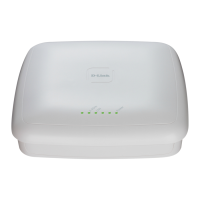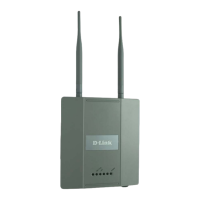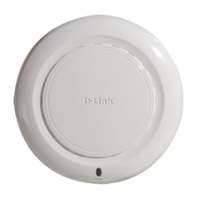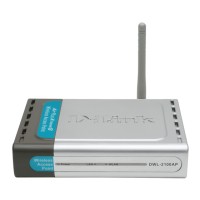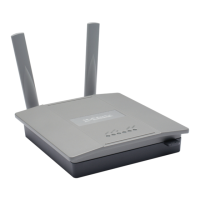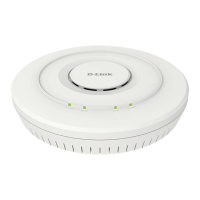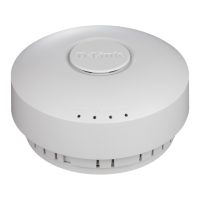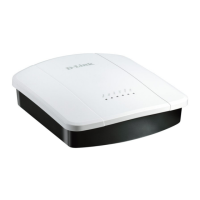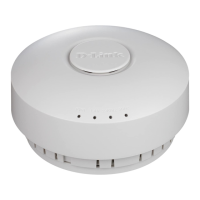Software User Manual D-Link Unified Access System
02/15/2011
Document 34CS3000-SWUM104-D10 Page 159
The AP does not send out any traps. The switch generates all SNMP traps based on its own events and events it learns
about through updates from the APs it manages.
Table 59 describes the events that generate SNMP traps. All traps are disabled by default.
Click Submit to update the switch with the values on the screen. If you want the switch to retain the new values across a
power cycle you must perform a save.
Table 59: SNMP Traps
Field Description
AP Failure Traps If you enable this field, the SNMP agent sends a trap if an AP fails to associate or authenticate
with the switch.
AP State Change Traps If you enable this field, the SNMP agent sends a trap for one of the following reasons:
• Managed AP Discovered
• Managed AP Failed
• Managed AP Unknown Protocol Discovered
• Managed AP Load Balancing Utilization Exceeded
Client Failure Traps If you enable this field, the SNMP agent sends a trap if a wireless client fails to associate or
authenticate with an AP that is managed by the switch.
Client State Change
Traps
If you enable this field, the SNMP agent sends a trap for one of the following reasons
associated with the wireless client:
• Client Association Detected
• Client Disassociation Detected
• Client Roam Detected
Peer Switch Traps If you enable this field, the SNMP agent sends a trap for one of the following reasons
associated with a peer switch:
• Peer Unified Switch Discovered
• Peer Unified Switch Failed
• Peer Unified Switch Unknown Protocol Discovered
RF Scan Traps If you enable this field, the SNMP agent sends a trap when the RF scan detects a new AP,
wireless client, or ad-hoc client.
Rogue AP Traps If you enable this field, the SNMP agent sends a trap when the switch discovers a rogue AP.
Wireless Status Traps If you enable this field, the SNMP agent sends a trap if the operational status of the D-Link
Unified Switch changes or of any of the following databases or lists has reached the maximum
number of entries:
• Managed AP database
• AP Neighbor List
• Client Neighbor List
• AP Authentication Failure List
• RF Scan AP List
• Client Association Database
• Client Authentication Failure List
Client Authentication
Trap
If you enable this field, the SNMP agent sends a trap when a wireless client authenticates
successfully to the network through a captive portal.
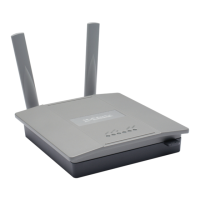
